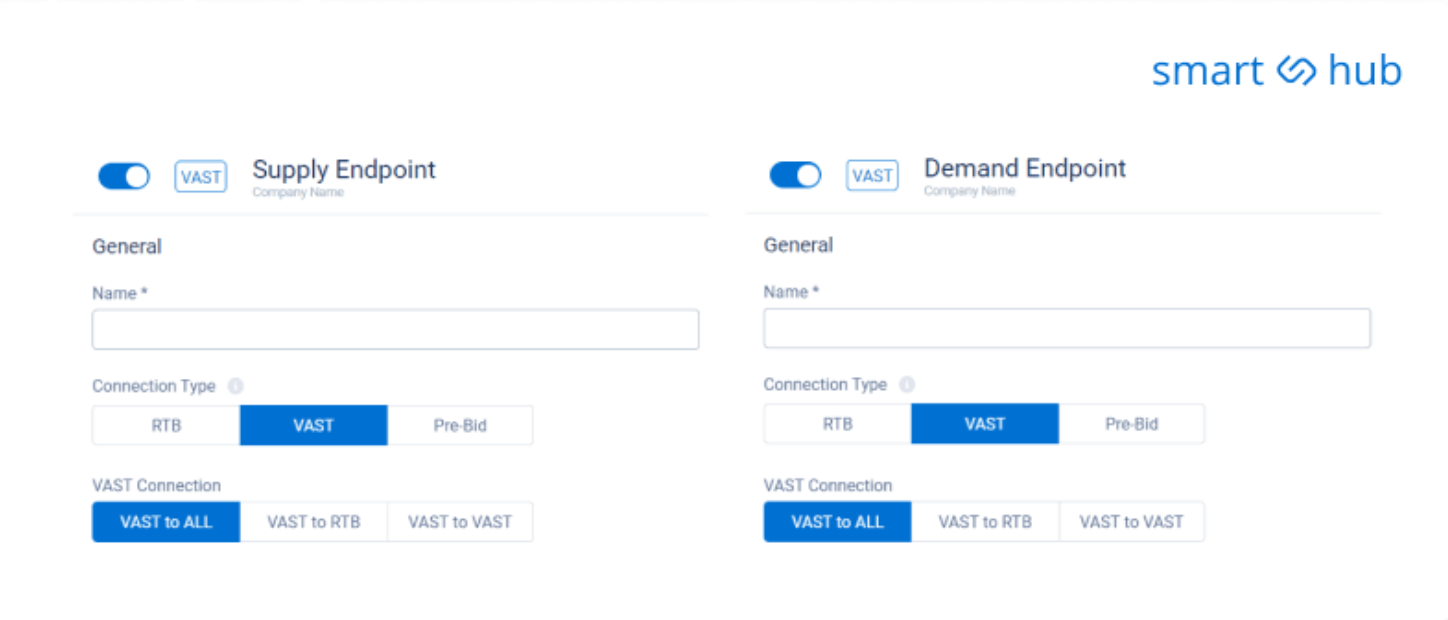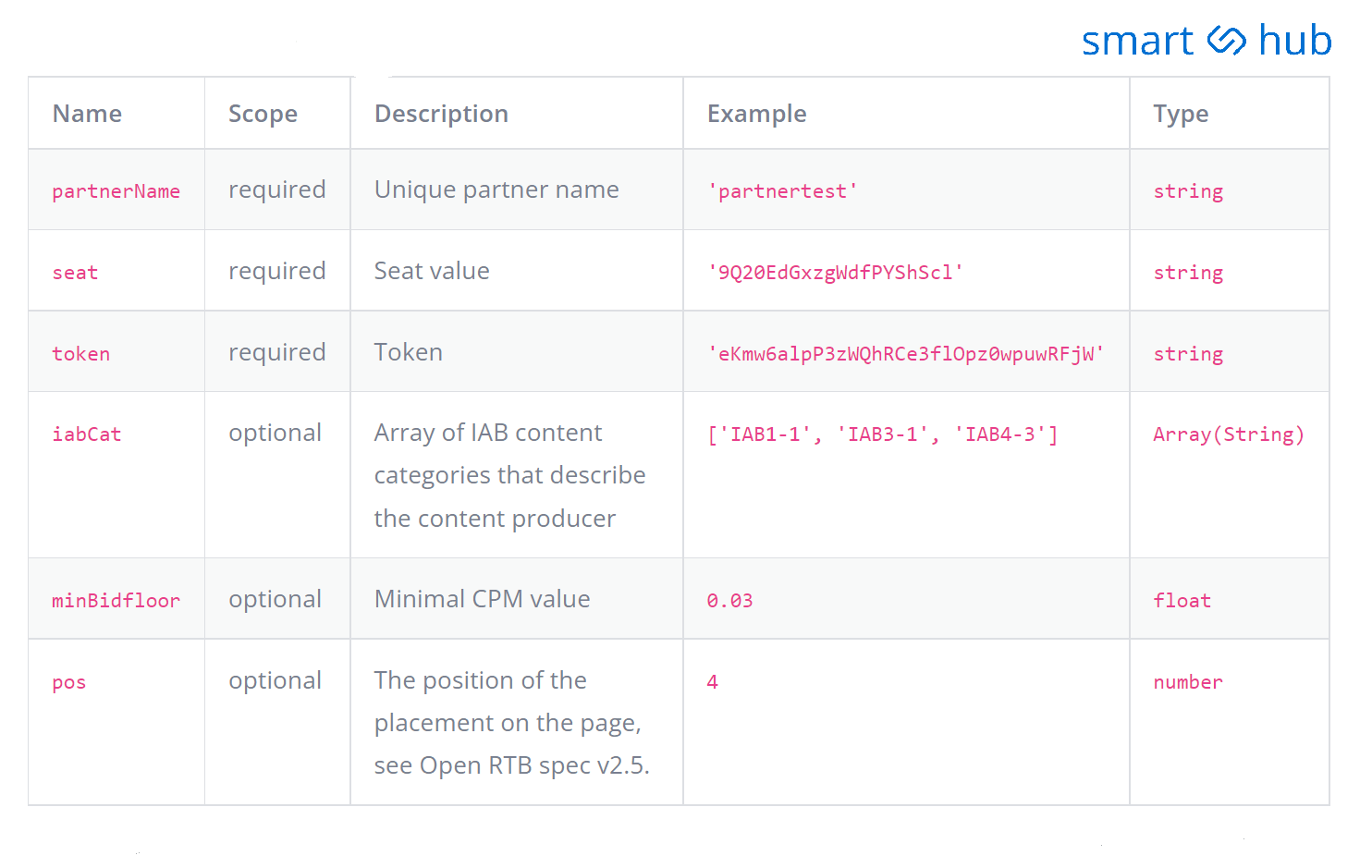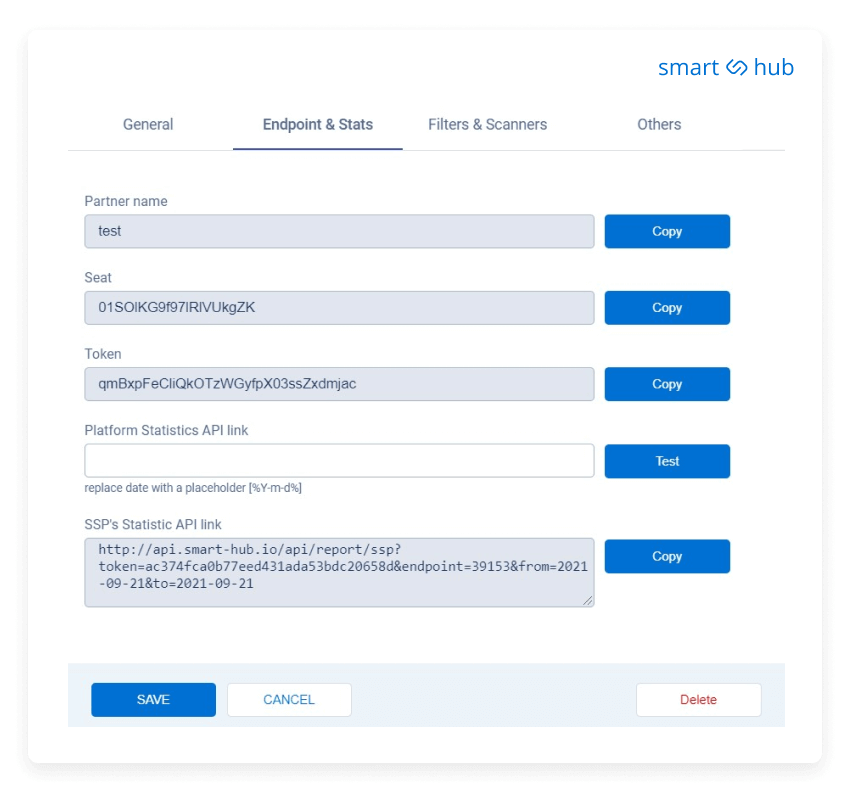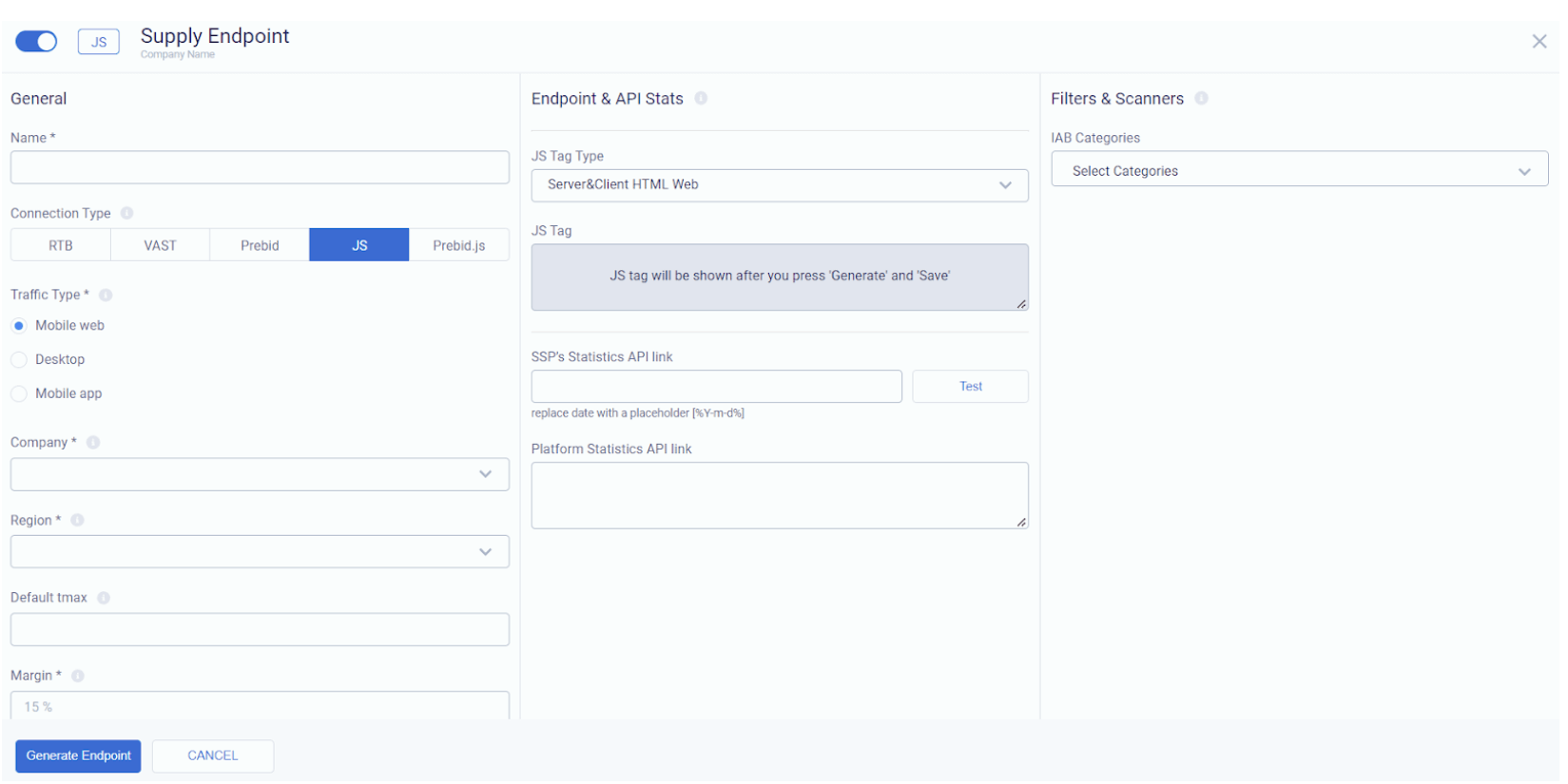Supply-Side Integration: 5 Ways to Connect SSPs on SmartHub
 by Roman Vrublivskyi
by Roman Vrublivskyi
 by Roman Vrublivskyi
by Roman Vrublivskyi
Integrating the right SSP partner into your marketplace can be the key that drives better traffic opportunities in your marketplace. A reliable supply partner will provide your marketplace with the right brand-safe traffic that demand partners will be willing to buy. Thus, the more partners follow the standards of IA`s OpenRTB 2.5 Specification, the higher are chances of faster and easier integration.
In this article, we are going to focus on SSPs and integration types that you can use in your SmartHub to connect supply partners seamlessly.
A supply-side platform (SSP) is the main aggregator of inventory in programmatic advertising. Publishers use SSP in order to automate the media-selling process and to effectively manage their advertising space in real time. Thanks to automated auctions, publishers can sell inventory more effectively since a single platform connects them to the vast majority of ad exchanges, DSPs, networks, and other sources of global programmatic demand.
Before SSPs were invented, publishers had to do the tasks manually — finding the best paying advertiser, negotiating ad placement details, and transactions. All of these actions are now performed automatically on SSP — this system is based on smart ML and AI algorithms that optimize the trading and keep the outcomes beneficial to the publisher.
On SSP the publisher can sell their inventory via direct deals with advertisers or through RTB auctions that work like this (in the nutshell):
For a comprehensive approach to transparency and fraud prevention, understanding the differences and synergies between sellers.json vs ads.txt is essential.
Your programmatic ecosystem (SmartHub) enables you to integrate a lot of supply and demand partners (SSPs and DSPs) thanks to which you can skyrocket the performance of the platform and its profitability. For businesses looking to offer tailored solutions under their own brand, understanding what is white label can provide a competitive edge in the market.
It is not an uncommon story when certain partners of yours support very specific types of integration, but even in such circumstances, we are always ready to go the extra mile and help you out with custom integrations. On top of that, we are constantly adding new integration types in order to make it easier for your partners to connect to SmartHub.
Supply-Partner Integration on SmartHub is possible with:
Let’s review each of them to understand which benefits they provide.
OpenRTB 2.5 is the most popular protocol according to which second and first-price auctions can be working. With OpenRTB 2.5 you can integrate supply and demand partners into your SmartHub, as well, 2.4, 2.3 versions for specific integrations are supported.
Benefits of RTB integration include:
It is the most common integration type. OpenRTB integration is pretty universal and became the golden standard in programmatic.
Providing more opportunities. OpenRTB standard is frequently updated. This way, for instance, the industry recently prepared OpenRTB 2.6 which provides more progressive ad serving opportunities — POD bidding for CTV, AdCom lists, and more transparent mechanisms for measuring CTV.
When you integrate an SSP, in the supply endpoint settings, choose ‘RTB’ and complete the standard endpoint setup.
Firstly, let`s recall what VAST is, and how its works. VAST is a Video Ad Serving Template for structuring ad tags that serve ads to video players. Using an XML schema, VAST transfers important metadata about an ad from the ad server to a video player. Launched in 2008, VAST has since played a huge role in the growth of the digital video marketplace.
It is convenient when your partners “speak the same language” and trade within one protocol. However, if they all trade within different standards, this could be a challenge. For this reason, we made ‘VAST to RTB’, ‘VAST to VAST’, and ‘VAST To All’ connection trading possible in your SmartHub. Thus, the main advantage is that media trading has turned universal. Explore how to vast for a quick overview and essential insights.
When you add SSP, in the endpoint settings configure the following details:

Header-bidding is a technology that enables unified auctions that can be held on the server-side. As you probably know, unified auctions are very beneficial for media trading because they allow simultaneous bidding. It maximizes the number of auction participants and thus, competition for inventory.
The benefits of header bidding include:
Elevated competition. Since competition is higher, publishers get the real value of their inventory.
Fair environment. In unified auctions demand partners bid simultaneously, they access the inventory at the same time, not one by one. For demand partners this means more chances to buy good quality ad placements.
Easy setup. Header-bidding is implemented only once, and there is no need to replace the script every time some changes are made.
Read further about Prebid JS and Prebid Server to find out more about implementation.
Prebid.js is an open-source solution that allows publishers to quickly implement header bidding on websites and mobile apps.
Advantages of Prebid.js integration type include:
Unbiased environment. Prebid.js code is open-source and the community makes sure that the auctions are unbiased; that’s the most obvious advantage of Prebid.js as a technology for integrations.
Convenience. Prebid.js provides the most extensive library of efficient adapters to connect publishers to major advertising platforms.
More mobile and desktop supply. Prebid.js also allows you to integrate more mobile web and desktop supply into your marketplace without much effort.
In order to configure the connection you need to accomplish these steps:
Keep in mind that on the partner’s side unique parameters of Prebid.js integration should also be set, so that the trading can be started. When the endpoint is generated, a unique partner name is set in the parameters, and this means that every SmartHub User works under their own name. The unique seat and token parameters will be created per every endpoint, this data will be transferred in the requests (with the partner’s name included).
When you generate the supply endpoint 3 unique parameters will be generated. Plus, 3 optional parameters can be transferred by partner’s request.

Prebid Server is advantageous technology for header-bidding that supports the unified auction server-side. Your SmartHub sends requests to the Prebid Server of your demand partners, (which then sends requests to all their bidders). After that, bids are returned to the Prebid Server. Then, the header-bidding auction is happening server-side. Next, demand Prebid servers provide the info about the winner to SmartHub.
SmartHub is registered at the bid adapter list meaning that you can integrate SSPs and also perform as DSP with its own bid adapter. For a seamless experience, consider our server-to-server supply integration.
If we talk about the benefits of Prebid Server, the main advantage is pretty obvious:
Server-to-server integration. There’s no latency caused by heavyweight header-bidding as the workload is put on servers.
Here’s how to get started with this integration for your supply:
Keep in mind that on the partner’s side unique parameters of Prebid Server integration should also be set, so that the trading can be started. When the endpoint is generated, a unique partner name is set in the parameters, and this means that every SmartHub User works under their own name. The unique seat and token parameters will be created per every endpoint, this data will be transferred in the requests (with the partner’s name included).
The list of Prebid server bid parameters will be contained in the Endpoint & Stats section inside the SSP endpoint settings.

JS tag is a string of code that performs very important functions and supports the process of ad serving. In the digital advertising ecosystem, understanding what is bot traffic and how to mitigate its impact is crucial for ensuring genuine user engagement and ad performance. In SmartHub you can also integrate banner supply with tags in JS. Developing a robust programmatic ads strategy is key to maximizing the potential of SSP integrations and reaching a broader audience effectively.
The main advantages of this integration type are:
To enable the connection, create a supply endpoint. Choose the JS as a connection type and finish the standard endpoint setup.

In SmartHub you can find a lot of different integration options that enable a smooth connection to your supply partners. No matter what trading standards they support — your system has everything to guarantee that integration goes smoothly for you and your partners. We hope that these integrations that we described above will help you to maximize the number of SSPs that you need in your marketplace and will increase your advertising opportunities and profits.
Want to Learn More?
Want to Learn More?
We'll get back to you very soon.